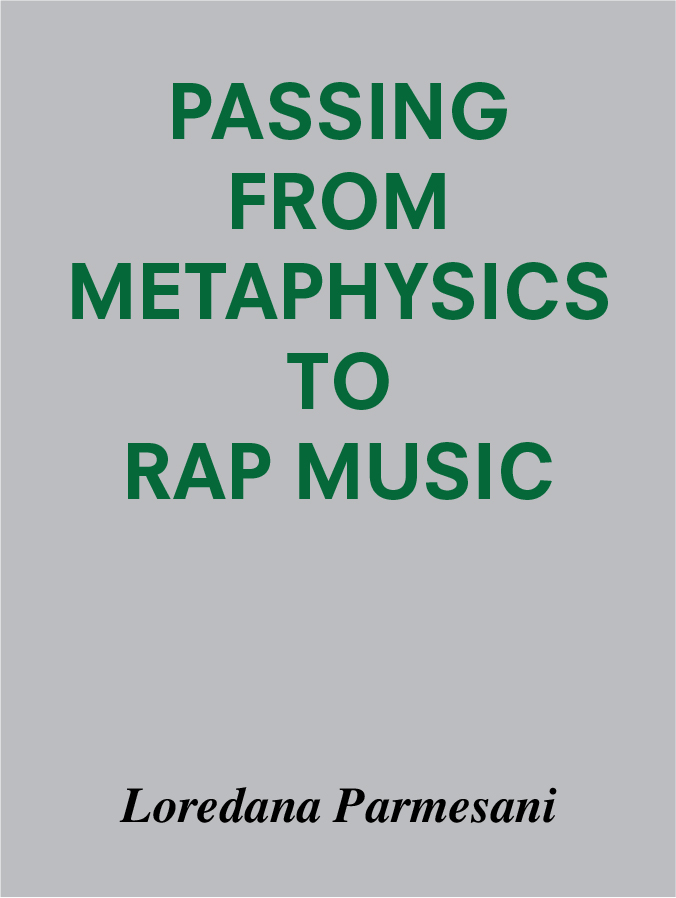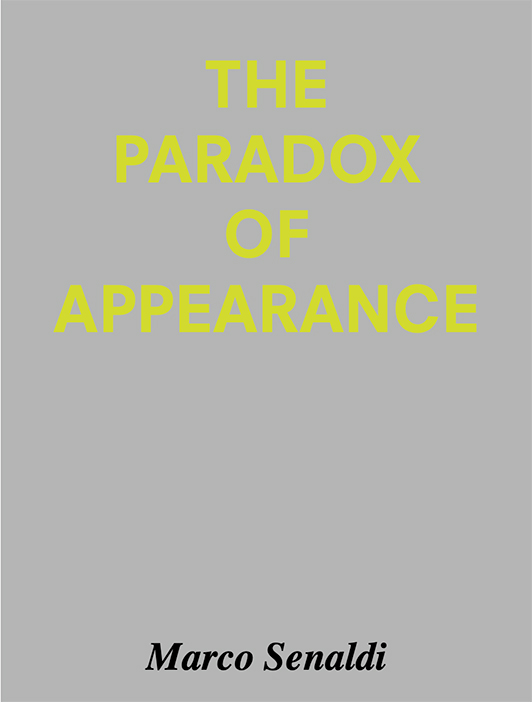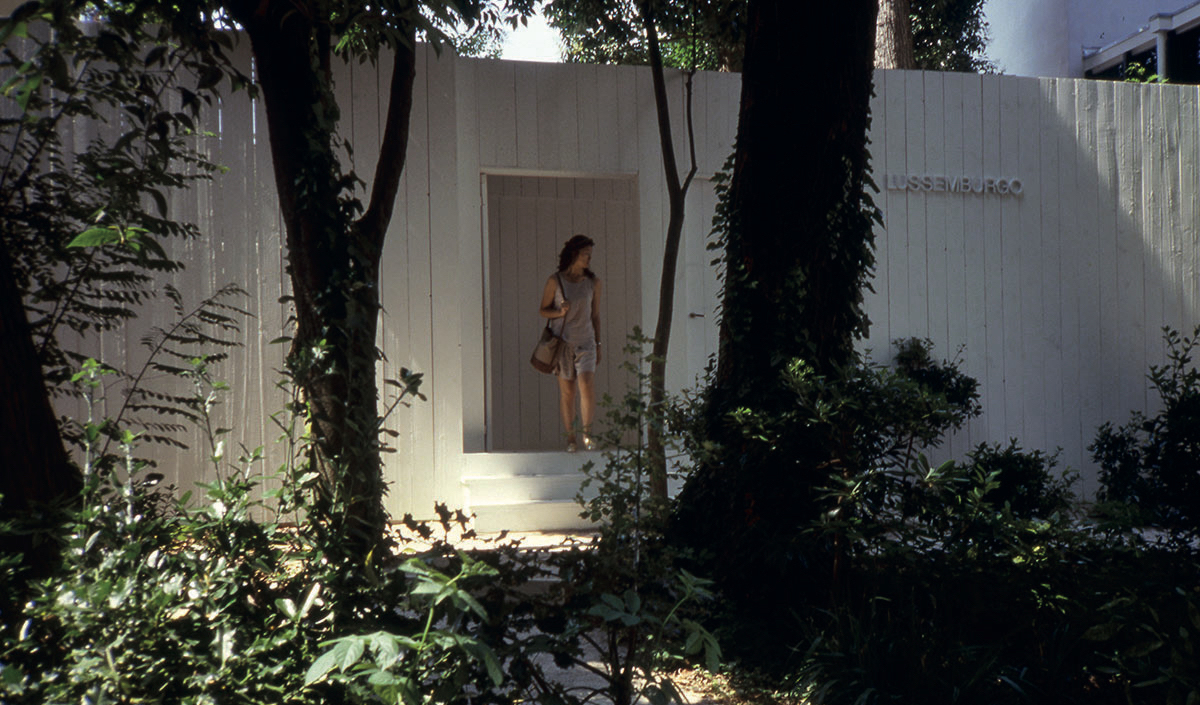Potemkin Lock
Painted wood, metallic structure, 11 deck chairs, sound
400 × 840 × 1200 cm
Sound: in collaboration with Raphaël Rippinger
Temporary installation, Giardini, Venice
Commissioner: Ministry of Culture of Luxembourg.
Curator: Enrico Lunghi
Produced in the context of the 46th Venice Biennale, 1995

Potemkin Lock
Giardini / Venice
Installation view / 1995
At the 1995 Venice Biennale, Luxembourg—like China, South Africa and many other countries—did not have a national pavilion. I, therefore, built a mock national pavilion situated between the Belgian and the Dutch pavilions…. Many visitors thought that the pavilion had always been there….
The title refers to the mock Russian villages built by Prince Potemkin and to a lock on a river or canal, which enables boats to pass from one water level to another. Upon entering the pavilion, spectators passed from one level of reality (the biennial, the art world) to another. Behind the facade, they discovered a garden with deckchairs, a view of the area behind the walls of the biennial, a campanile.
A doubt arose in their minds: are the people in the deckchairs actors in a performance? Who is the observer, who is the observed?…. This feeling of extraterritoriality at the biennial prompted visitors to fill the interior walls of the pavilion and the chairs with texts, drawings and graffiti—the laws of the “white cube” were no longer respected. The “lock” had worked..
Bert Theis, 1995
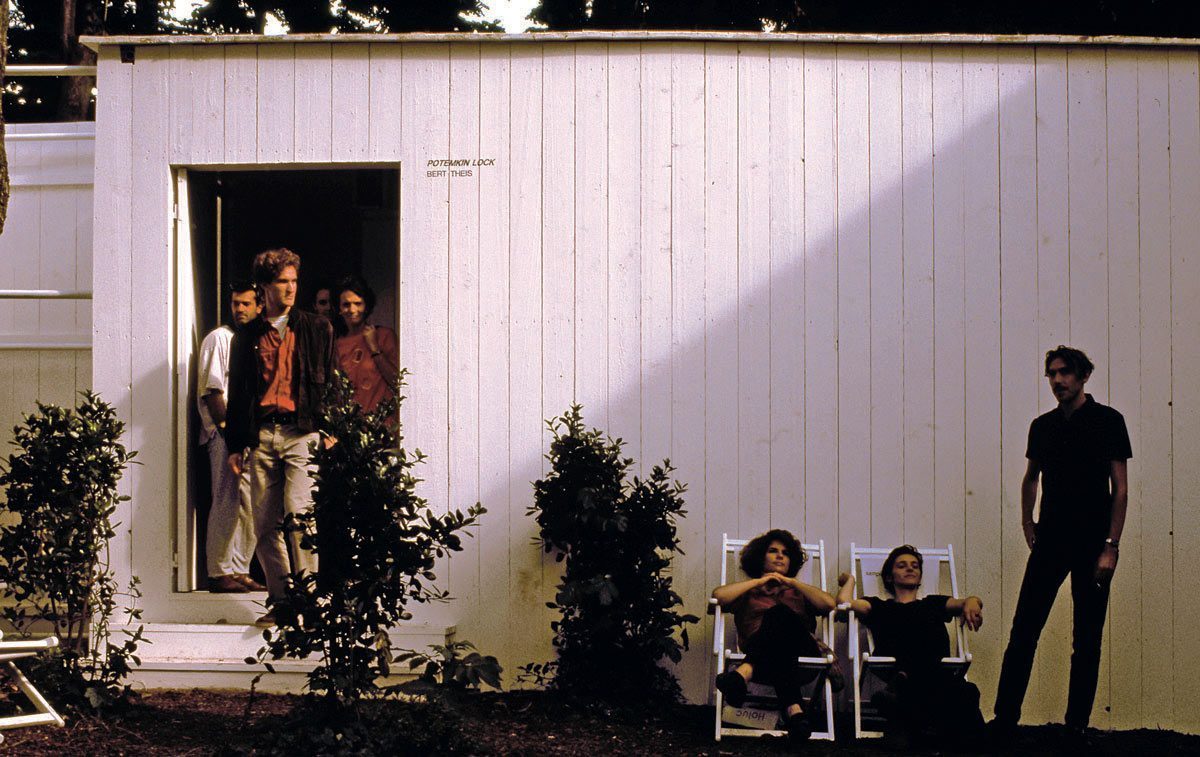
Potemkin Lock
Giardini / Venice
Installation view / 1995
Potemkin Lock
Giardini / Venice
Before the intervention / 1995

Potemkin Lock
Giardini / Venice
Maquette / 1995
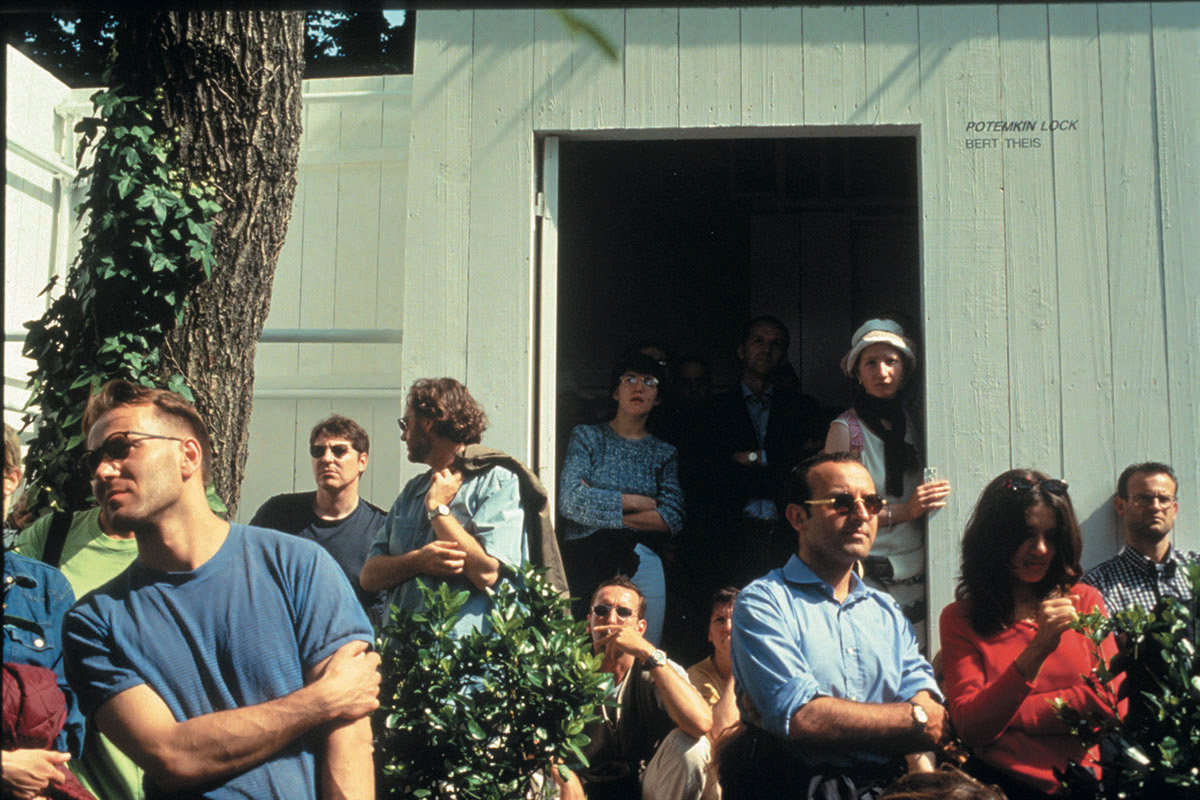
Potemkin Lock
Giardini / Venice
Installation view / 1995
Potemkin Lock
Giardini / Venice
Installation view / 1995
Potemkin Lock
Giardini / Venice
Installation view / 1995
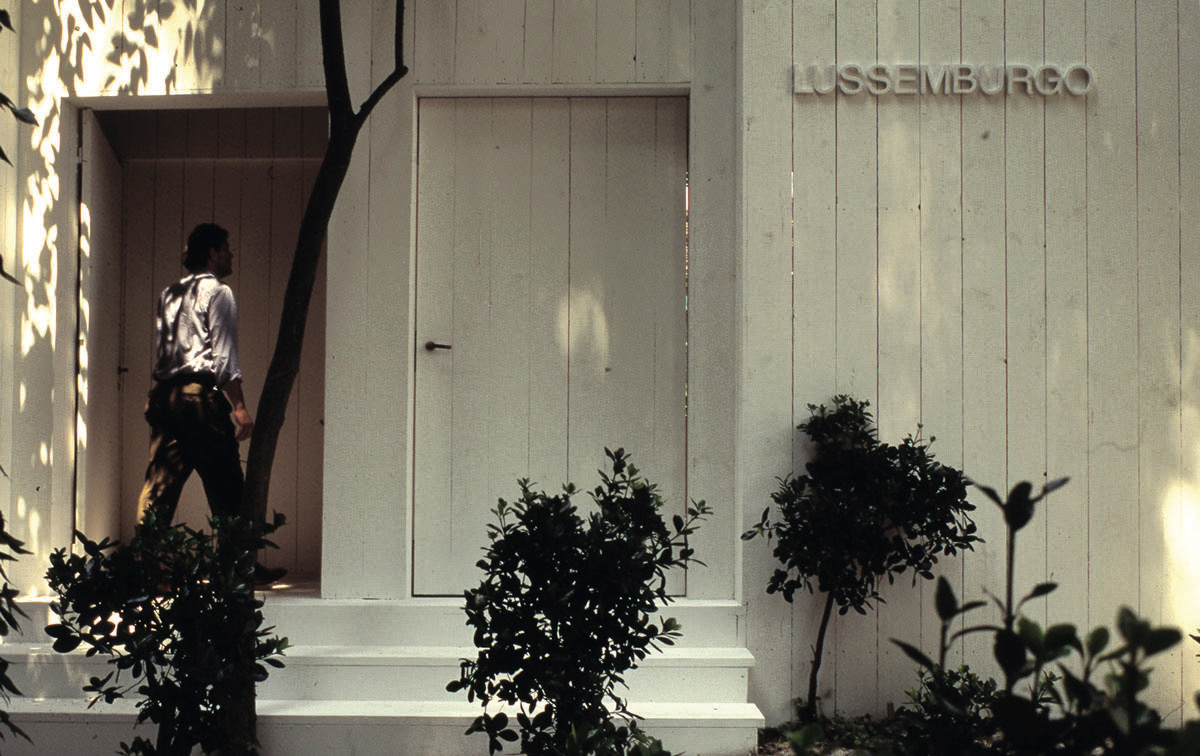

Potemkin Lock
Giardini / Venice
Installation view / 1995
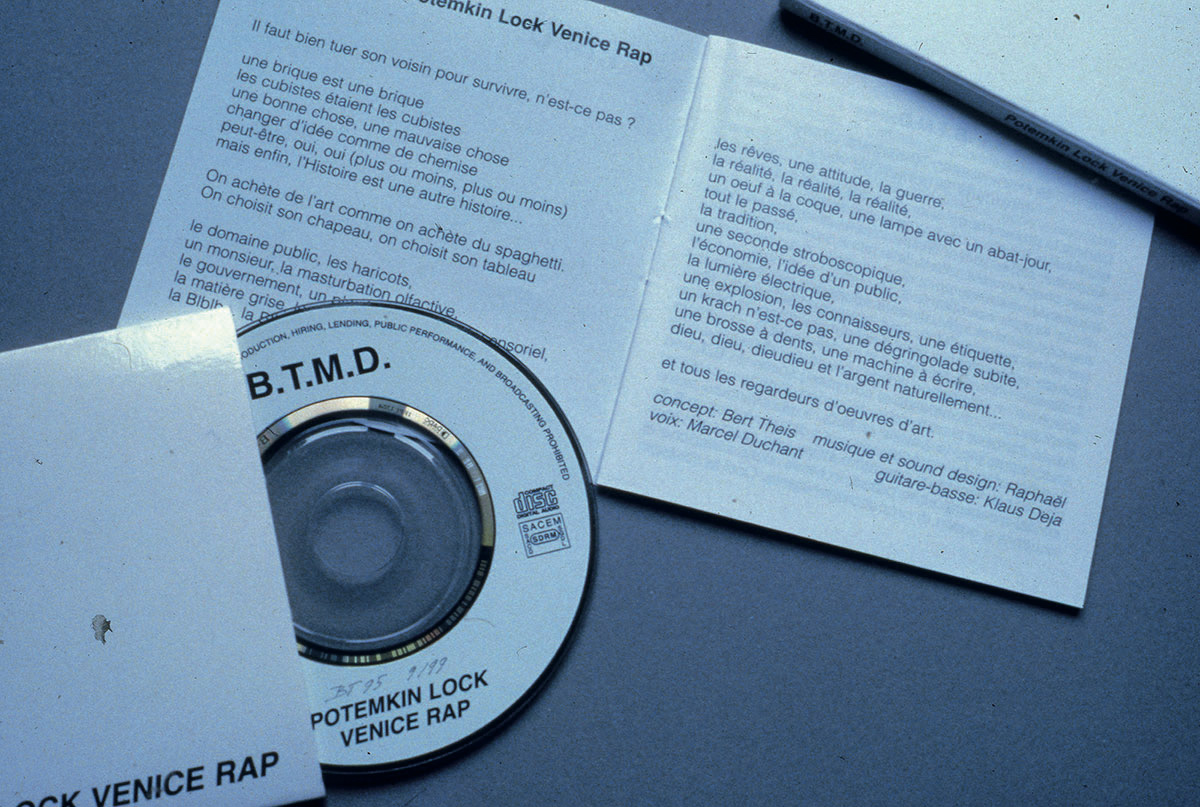
Potemkin Lock Venice Rap
Cd with booklet, ed. 100 / 1995


